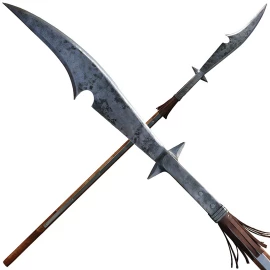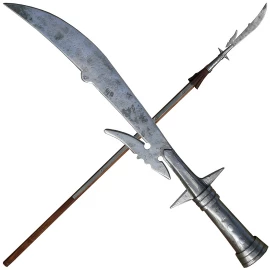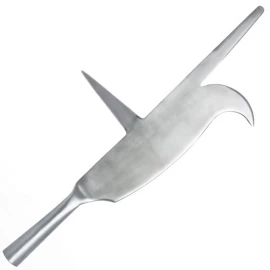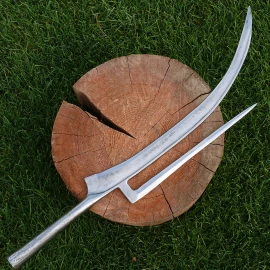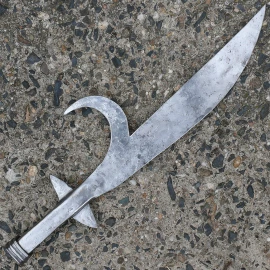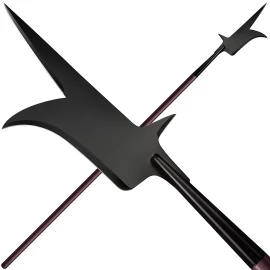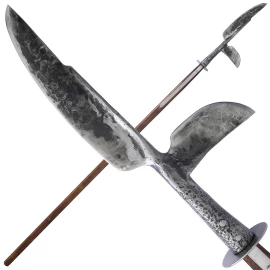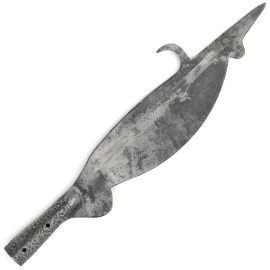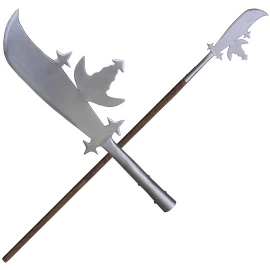Glaives
A glaive is a European polearm weapon, consisting of a single-edged blade on the end of a pole. It is similar to the Japanese naginata, the Chinese guandao and pudao, Russian sovnya and Siberian palma (ru). Typically, the blade of a glaive is around 45 centimetres (18 in) long, on the end of a pole 2 metres (7 ft) long, and the blade was affixed in a socket-shaft configuration similar to an axe head, rather than having a tang like a sword or naginata. Occasionally, glaive blades were created with a small hook on the reverse side to better catch riders. Such blades are called glaive-guisarmes.
Filter products
Filter exactly what you are interested in.
9 items out of 9 found
Glaives
According to the 1599 treatise Paradoxes of Defence by the English gentleman George Silver, the glaive is used in the same general manner as the quarterstaff, half pike, bill, halberd, voulge, or partisan. Silver rated this class of polearms above all other individual hand-to-hand combat weapons.
The Maciejowski Bible (Morgan Bible) depicts an example of a two-handed glaive used on horseback. The contemporary term for this weapon may have been faussart, which was used for a variety of single-edged weapons seen as related to the scythe.

